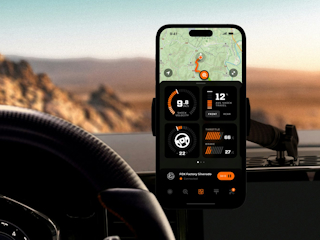Today’s hamburger menu equivalent is the chatbot. Companies port all their Q&A content over and are surprised that instead of alleviating their call center reps, they are now supporting issues with their chatbot on top of everything else.
The good news is that the focus on mobile technology paid off, and so will conversational experiences. The trick is to understand the use cases for the channel and leverage the affordances of the technology. Remember mobile moments? Let’s talk more about conversation moments and how to solve for them.
So your company wants a (better) bot, now what?
Why are we leveraging conversational technology? Here are some good reasons our clients have presented us for exploring chat and voice bots:
-
Providing 24/7 support for their customers, without staffing 24/7.
-
Reducing support call volume for topics that have common solutions.
-
Simplifying valuable actions that can be automated for their customer with a simple prompt.
- Leveraging machine learning models to improve personalized, yet consistent, customer experience.
Conversational experiences could be useful to you, but what about your customers?
Using the Jobs to Be Done framework, we work with our clients to understand why their customers would be “hiring” voice or chat to complete this task rather than another channel. Our goal is typically to help a customer complete a task or consume information. Common reasons we’ve seen customers utilize voice or chat include the following:
-
I want to get support when it is convenient for me (not necessarily during work hours).
-
I want a more accessible way to connect with the brand for customers with vision, mobility, or hearing impairments.
-
I want to be able to multi-task and use voice to be hands-free.
-
I want to document my interactions with a brand for reference.
One of our automobile manufacturer clients worked with us on a strictly in-car experience. This meant very little or no dependency on a visual UI and brought unique challenges, like other people talking in the car.
These are the roles we consider the bot providing support for. It’s important to identify which experiences it’s going to personify, for the user to meet their needs.
Receptionist: Chatbots can greet your online users and offer to direct them to the information they need.
Account clerk: Chatbots can take a customer’s details and check their account to retrieve information. For these kinds of routine, repetitive account chores, chatbots are an effective (and often invisible) service tool.
Salesperson: A chatbot could be programmed to start conversations based on what a user is browsing, such as a feature set or price list or suggest deals and answer any product questions.
Shop assistant: Commonly asked FAQs can be answered by a chatbot effortlessly and allow the bot to fill in any knowledge gaps.
If you shouldn’t port over your entire Q&A section of the website, what should you do?
If you are like most brands, you’ve already been interacting with your customers. What are they asking? One of the first things we do with our clients is buddy up with their customer insights and support teams to look at the data. What type of support is requested the most? Which type of support, when alleviated, would provide the most return on investment? What support would be most viable via a chat or voice interface?
When creating a voice experience around something as complex as a restaurant menu and its many modifications, it is important to have a knowledgeable designer or architect onboard.
Most people typically find bots to be lackluster, unhelpful, and more frustrating than they are worth. Therefore, it is essential to work with a UX researcher and convo UX designer to explore and evaluate the customer experience. Our UX team members analyze transcripts, create and test prototyped experiences, and carefully design flows and language that align with your brand to ensure we are setting the customer up for success and, dare we say, delight?
What unique challenges does conversational UX present?
There will always be a customer who wants to get to a human as soon as possible. We try to accommodate this whenever we can, while noting advantages to solving the problem through the bot. A common advantage is improved wait time. There will also be things your bot doesn’t know. We make sure to provide fallbacks, or graceful ways to let the customer know we can’t help with that yet. These become significant indicators in analytics.
Speaking of brand, what should you know about bot personas?
We work with our clients on bot personality spectrums based on existing brand guidelines and the willingness to purposely steer this channel away from what exists today. Leveraging roleplaying activities, we test the different ways a bot could affirm what the customer is saying, respond when it doesn’t understand, or even say thank you. There are benefits to being bot-like and human-like, so we collaborate to understand how we want to leverage those benefits and how far we want to push the “human” side.
Voice spectrum













